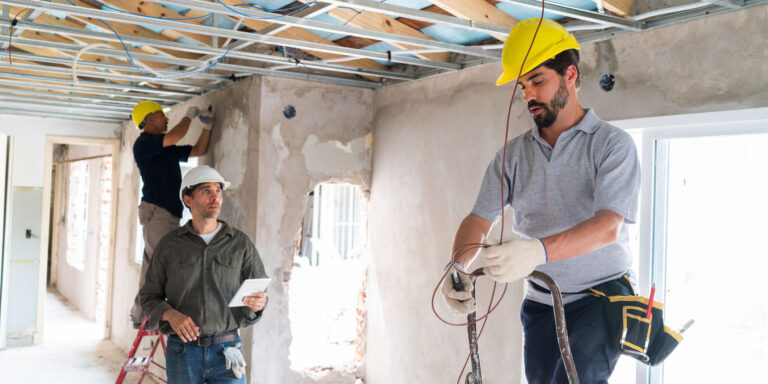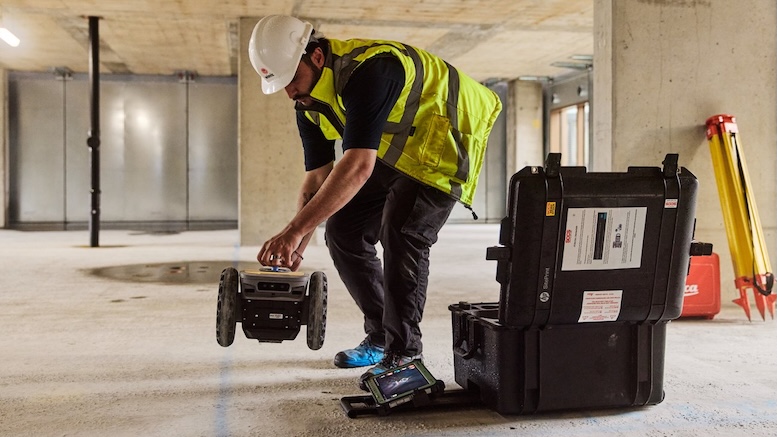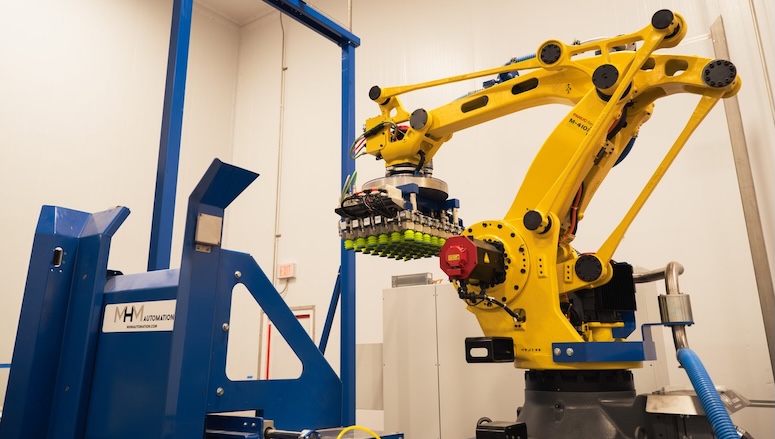— 8 min read
The Importance of Utility Coordination in Construction


Last Updated Oct 4, 2024

Stephen Abadie
Infrastructure Team Lead
Stephen Abadie is an Infrastructure Team Leader at RNGD. Stephen joined RNGD in 2015 as the Infrastructure Division’s Assistant Project Manager. Now, as Team Leader, Stephen uses his 17+ years of professional expertise in major infrastructure and civil construction to lead a team of 85+ employees in talent development, lean project delivery, and execution of production systems, delivering quality products for RNGD's diverse client base.
In his day-to-day, he directs his team on safety, quality, and production for all current and future projects. He enjoys leading a diverse group of personalities that span generations, learning from those with decades of experience, and mentoring the next generation of construction talent. A native of New Orleans, Stephen graduated from Louisiana State University with a degree in Construction Management.
Both construction and building relationships are his true passions, but when he’s not in the office or on-site, Stephen’s with family or spending time outdoors hunting or golfing. When he finds the time, he indulges in a good book or article about world history.

James Hamilton
Writer & Producer
85 articles
James Hamilton is a writer based in Brooklyn, New York with experience in television, documentaries, journalism, comedy, and podcasts. His work has been featured on VICE TV and on The Moth. James was a writer and narrator for the show, VICE News Tonight, where he won an Emmy Award and was nominated for a Peabody Award.
Last Updated Oct 4, 2024

Most modern structures require utilities. Office buildings need internet. Restaurants need natural gas. Even beyond streetlights or traffic lights, roads often have utilities running alongside or underneath them. While the utilities themselves are fundamental to the finished product, coordinating their installation is an essential part of the construction process.
Utility coordination is managing the installation, refurbishing or relocation of utilities, which might include plumbing, gas, mechanical, electrical, internet or cable. It can be a complex part of completing any construction project, ranging from building a new house to renovating an existing power plant. Effective coordination requires diligent planning, communication and facilitating collaboration between numerous stakeholders.
This article explores the importance, common challenges and best practices of utility coordination.
Table of contents
The Importance of Utility Coordination
While it’s extremely common, utility coordination looks different for different projects, depending on variables such as local regulations or the intended use of the project. Infrastructure projects that provide utilities — such as power plants or wastewater pipes — must coordinate with the city or county’s master plans so utilities can be accessed safely and effectively.
Effective utility coordination can improve project outcomes in a number of ways, including:
Staying On Time and Budget
Utility coordination can involve many stakeholders. Trade partners need to do the installation, the authority having jurisdiction (AHJ) often does the inspection and owners have specific needs for the end product, so one issue can have cascading consequences. Effective coordination can help prevent disruptions and delays, which can be costly for contractors, owners and communities.
Managing Impact on Surrounding Areas
Utilities are usually part of a larger interconnected infrastructure, so ongoing issues or a specific incident can have implications for a whole community or region. For example, a mistake connecting to water or wastewater infrastructure could result in a whole neighborhood losing access to water.
Maintaining Safety
Proper coordination prevents delays and helps maintain work and public safety. Many utilities, such as electricity or wastewater, can introduce elements into a construction site that, when handled incorrectly, can lead to dangerous situations.
Ensuring Compliance
Many places have regulatory requirements in regard to utilities. Some governing bodies, such as Denver’s water board, will provide checklists or instructions on how to connect new utilities. Coordination should help avoid legal issues and citations that can result in project slowdowns or shutdowns.
Best Practices for Utility Coordination
Utility coordination can be complex, but there are a few things that usually help improve outcomes and efficacy.
Make the most of rough-in inspections.
Rough-in inspections are formal checks of important systems, including many utilities, that occur after system installation but before the construction of finishing touches, such as walls or ceilings. Rough-ins are meant to catch issues before they are closed in and become more difficult and costly to address. This can help avoid potentially devastating issues, such as electrical fires, leaks or structural concerns.
Start collaboration early.
Involving stakeholders, including trade partners and the AHJ, early in the planning phase can help anticipate and mitigate potential conflicts. AHJs, such as public works departments, can help streamline the process and ensure requirements are met. Some planning techniques, such as pull planning, help increase communication and collaboration with trade partners in ways that can lead to high quality work and better partnerships in the future.
Be proactive about relocating utilities.
Building or renovating public works such as roads can involve extensive utility coordination. In ideal situations, the utilities will be relocated before contractors begin work in order to minimize cost, time and risk.
However, this isn’t always feasible. Contractors will often be notified of the expected time for relocating utilities so they can factor that into their planning. In more extreme cases, coordination can require meeting directly with one or a few providers who are holding up the process and, consequently, stopping work from beginning.
Be familiar with the process.
Utility coordination usually involves numerous inspections and extensive documentation. Many places, such as Minneapolis, list requirements and expectations for different types of projects.
Understanding requirements as early as possible, especially when working in a different state or area, can help avoid delays later in the process or scrambling to collect things and needing to track down trade partners that have been off the job for a long time.
Have systems for document management.
Utility coordination almost always involves an immense amount of document management. Installation usually involves numerous submittals, updating as-builts, proof of inspections, reports and operation and maintenance manuals. Most of those documents need to be included as part of the closeout documents. Establishing a system of document management, such as using Procore, can help keep this process proactive and share expectations with all stakeholders.
Invest in advanced technology.
Many innovations can help make utility coordination easier, safer and more efficient. For example, Building Information Modeling (BIM) can help visualize utility placements and identify conflicts early in the planning process, while Geographic Information Systems (GIS) can help store, share and analyze extensive amounts of data to make better decisions. These tools can help with submittals and collecting closeout documents proactively throughout the process.
Segment projects.
Whenever possible, work on utilities can be segmented so work is done in controlled areas. For example, a team reconstructing one mile of a road might focus their efforts on relocating the first thousand feet of utilities. This improves efficiency while also controlling the space where issues can occur.
Communicate transparently.
Establishing and maintaining open communication with all stakeholders is perhaps the most important practice of utility coordination. Some GCs host regular OAC (owner, architect, contractor) meetings to ensure everyone has time to communicate about and resolve issues. With residents who might be affected by a project, GCs should work to communicate what to expect and potential delays through websites, flyers, traffic notices or meetings.
Communication is especially important with the AHJ, as utilities must also connect to larger, intricate infrastructure. Gaining access to as-builts, coordinating with inspectors and establishing communication with utility providers can help avoid problems or resolve them when they arise.
Courses about construction.
For construction.
Unlock your career potential with our free educational courses on Health & Safety, Data in Construction, and more.
Common Challenges in Utility Coordination
A few challenges commonly come up when coordinating utilities during a construction project.
Multiple Generations of Infrastructure
Managing old utilities alongside new installations poses unique challenges. This is common with new construction in established areas, such as a project in a downtown area or a new hotel near a historic landmark. Often, this can pose compatibility issues, such as putting a high-speed fiber optic network in an old building that was built to have bulkier cables. Compatibility issues can require engineers to get creative with adapters and connectors. In more extreme cases, accurate records can be hard to come by, which can lead to delays as contractors work to locate and assess old utilities.
Stakeholder Management
Coordination usually involves many stakeholders, including utility providers, trade partners, the AHJ and owners. Each stakeholder usually has their own timeline, preferences and constraints, making it difficult to align schedules and expectations. Effective stakeholder management involves establishing systems of communication and workflows as early as possible. This might include OAC meetings, document management software such as Procore or other systems that help keep numerous parties engaged and informed.
Coordination in Different Types of Spaces
Coordination can get difficult in tight spaces, such as an office building or a hotel, and it gets even more difficult in densely populated areas, such as in urban centers. Many workers and stakeholders can work, stage or receive deliveries in the same spaces. Managing construction logistics and being familiar with local rules and regulations can help make planning and execution easier and more effective.
Temporary Utilities
The construction process usually requires power, water, sanitation and communication services, which is why projects often need temporary utilities while they work on installing or refurbishing permanent utilities.
For electricity, this often involves generators that, depending on their intended use, are powered by batteries, diesel, gas, solar or temporary power poles provided by a utility company. Water tanks, trucks or lines connecting to nearby water mains can help meet the need for water for dust suppression, equipment use, maintenance and sanitation. Some construction managers (CMs) will arrange for other temporary solutions, such as portable heaters, mobile light towers, internet hotspots, cellular boosters, portable toilets or temporary septic systems.
Unforeseen Issues
With so many variables, issues inevitably arise. When possible, it can help to create buffer times in a project’s schedule, or to use planning methods that organize the process, such as the Critical Path Method (CPM), or that include trade partners, such as pull planning. Communication helps here too, as open lines can help identify problems as early as possible and establish ways of resolving issues quickly and thoroughly.
The High Stakes of Utility Coordination
In many ways, effective utility coordination is the same as effective construction management. It requires solid planning, good communication, quick problem-solving and expert organization. However, utilities are often intricate and connected to the surrounding community.
Issues or mistakes in one building can have cascading consequences for a whole neighborhood, city or region. Floods, electrical outages and road closures can all occur from ineffective coordination. Taking the time to engage and coordinate in ways that reduce risk can lead to better outcomes for all stakeholders.
Was this article helpful?
Thank you for your submission.
100%
0%
You voted that this article was . Was this a mistake? If so, change your vote
Scroll less, learn more about construction.
Subscribe to The Blueprint, Procore’s construction newsletter, to get content from industry experts delivered straight to your inbox.
By clicking this button, you agree to our Privacy Notice and Terms of Service.
Thank you!
You’re signed up to receive The Blueprint newsletter from Procore. You can unsubscribe at any time.
Categories:
Written by

Stephen Abadie
Infrastructure Team Lead
Stephen Abadie is an Infrastructure Team Leader at RNGD. Stephen joined RNGD in 2015 as the Infrastructure Division’s Assistant Project Manager. Now, as Team Leader, Stephen uses his 17+ years of professional expertise in major infrastructure and civil construction to lead a team of 85+ employees in talent development, lean project delivery, and execution of production systems, delivering quality products for RNGD's diverse client base.
In his day-to-day, he directs his team on safety, quality, and production for all current and future projects. He enjoys leading a diverse group of personalities that span generations, learning from those with decades of experience, and mentoring the next generation of construction talent. A native of New Orleans, Stephen graduated from Louisiana State University with a degree in Construction Management.
Both construction and building relationships are his true passions, but when he’s not in the office or on-site, Stephen’s with family or spending time outdoors hunting or golfing. When he finds the time, he indulges in a good book or article about world history.
View profile
James Hamilton
Writer & Producer
85 articles
James Hamilton is a writer based in Brooklyn, New York with experience in television, documentaries, journalism, comedy, and podcasts. His work has been featured on VICE TV and on The Moth. James was a writer and narrator for the show, VICE News Tonight, where he won an Emmy Award and was nominated for a Peabody Award.
View profileExplore more helpful resources

Harnessing Smart Construction Technology for Future Growth
Augmenting human intelligence with smart technology in construction makes it possible to tackle the considerable challenges of building the structures society demands. To adapt to client expectations while maintaining profitability,...

Mastering Capital Project Risk Management Across the Project Lifecycle
Capital projects — construction of significant infrastructure such as highways, utilities, or large-scale structures like hospitals or office buildings — have long timelines and with longer construction time comes greater...

Automation in Construction: Transforming the Future of Building
Technological advancements empower the construction industry to tackle complex projects and drive the global demand for sustainable, feature-rich structures technology makes possible. From design to closeout, construction automation is enabling...

Bid Management Software: Key Features & How to Choose the Right Fit
Bidding on construction projects can be a complex process. Sourcing appropriate bids and requests for proposals, analyzing bid documents, making sure estimates, preliminary schedules, and other mandatory requirements are met...
Free Tools
Calculators
Use our calculators to estimate the cost of construction materials for your next project.
Templates
Find a template to help you with your construction project tasks.
Material Price Tracker
Get the latest U.S. retail prices and view historical trends for common building materials.
Glossary
Explore key terms and phrases used in the industry.
